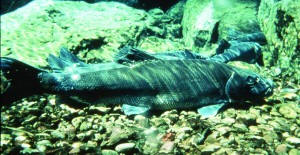Most of the economic burden of the U.S. Fish and Wildlife Service’s 2011 designation of habitat for Endangered Species Act-listed Lost River and shortnose sucker will come in the form of administrative costs, likely by federal organizations or projects, for federal permits.
Those costs amounts to $586,000, or $51,700 on an annualized basis over a 20-year period, according to a draft economic analysis of revised critical habitat, released by the service last week.
“It mostly tries to identify the additional cost of implementing the regulation of having critical habitat mapped on the landscape and having to consult,” said Laurie Sada, with the Klamath Falls Fish and Wildlife Office.
For example, the cost of the U.S. Forest Service having to consult on activities and make sure a project is not impacting critical habitat, is included in that $586,000, Sada said. The Klamath Project, a federal irrigation project, is another example where such administrative costs could come into play.
Critical habitat
The service’s press release said designating critical habitat does not affect land ownership or establish a refuge or preserve. Nor does it give the government access to private land.
“The Endangered Species Act mostly comes into play when there is a federal nexus — where somebody has to get a federal permit, or federal monies are involved, or federal lands are involved,” Sada said. “But in general private landowners are not affected unless they’re looking for a permit.”
The fish and wildlife service has worked with landowners to preserve habitat in the Sprague River and Williamson River areas, she noted.
Critical habitat is a way for the fish and wildlife service to be aware of areas it wants to watch in the future, in this case critical to the survival and recovery of sucker.
The service first identified the sucker’s critical habitat in 1994. In December of last year, that habitat estimate was revised to 241,538 acres and 274 stream miles.
The draft economic analysis pertains to that designation of critical habitat. It does not look at the overall economic impact of listing the Lost River and shortnose sucker.
The draft economic analysis is available on the Klamath Falls Fish and Wildlife Office website, under the news section: www.fws.gov/klamathfallsfwo/news/news.htm. Click on the draft economic analysis link.
The service is taking comments on the draft economic analysis from July 26 to Aug. 27.
Side Bar
■ By mail to: Public Comments Processing, Attn: FWS-R8-ES-2011-0097; Division of Policy and Directives Management; U.S. Fish and Wildlife Service; 4401 N. Fairfax Drive, MS 2042-PDM; Arlington, VA 22203.

